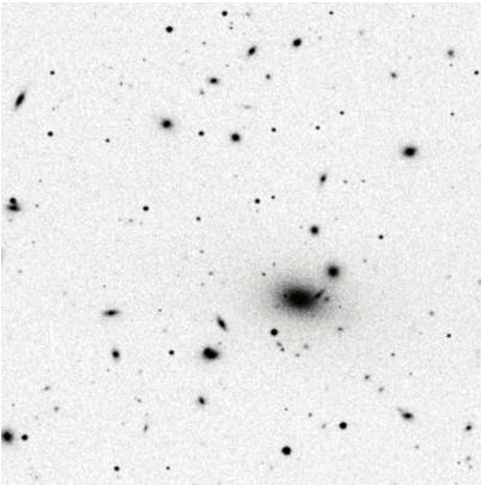
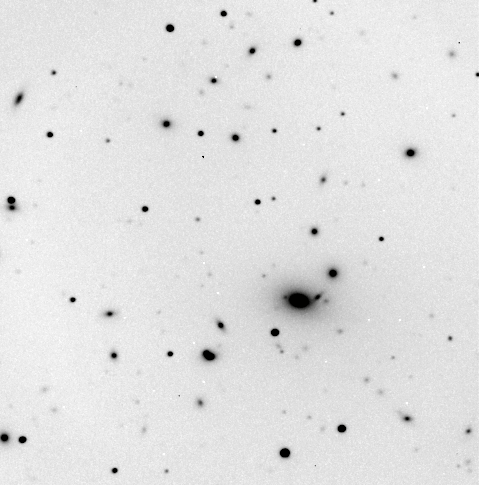
On the night of May 22/23, 2015, I observed the cataclysmic variable star V446 Her and, just for fun, the supernova KISS15n.
The main setup was:
Notes from the night
The Kiso Supernova Survey (KISS) is looking for very young Type Ia supernovae over a wide area of the sky. On May 10, the Kiso Schmidt Telescope found a faint object in the Coma Cluster of galaxies. It has brightened since then, and appears to be a Type Ia supernova.
Can you find it in the pictures below? The "before" image is on the left, and the "after" image -- taken at the RIT Observatory last night -- is on the right. The RIT image is a median of 63 one-minute exposures through a clear filter with our 12-inch telescope.


Perhaps this blinking image will make the supernova easier to find.
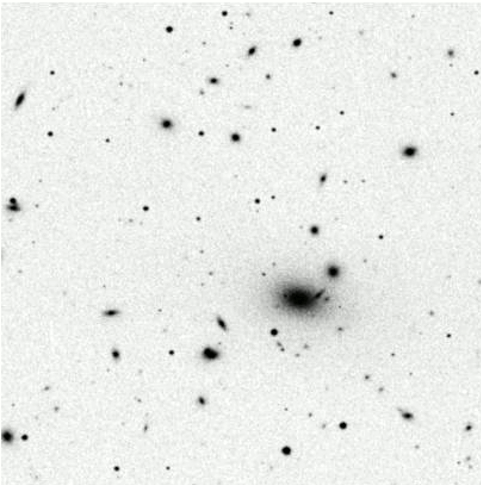
Note that there is no OBVIOUS host galaxy close to the supernova; however, deep HST images do show a faint, low-surface-brightness object with a point-like nucleus near the SN.
I was surprised by the brightness of the SN in these images. Next time, I'll have to try to use filters to measure its magnitude in the standard passbands.
This object is an old nova: Nova Her 1960, to be exact. Joe Patterson suggested that CBA members monitor it in a recent missive, so I gave it a try.
It's probably too faint for me
Here's a chart of the field of V446 Her, which is at
RA = 18:57:21.51 Dec = +13:14:29.9 (J2000)
The chart is about 21x21 arcminutes, and the target, V446 Her, is circled near the left edge.
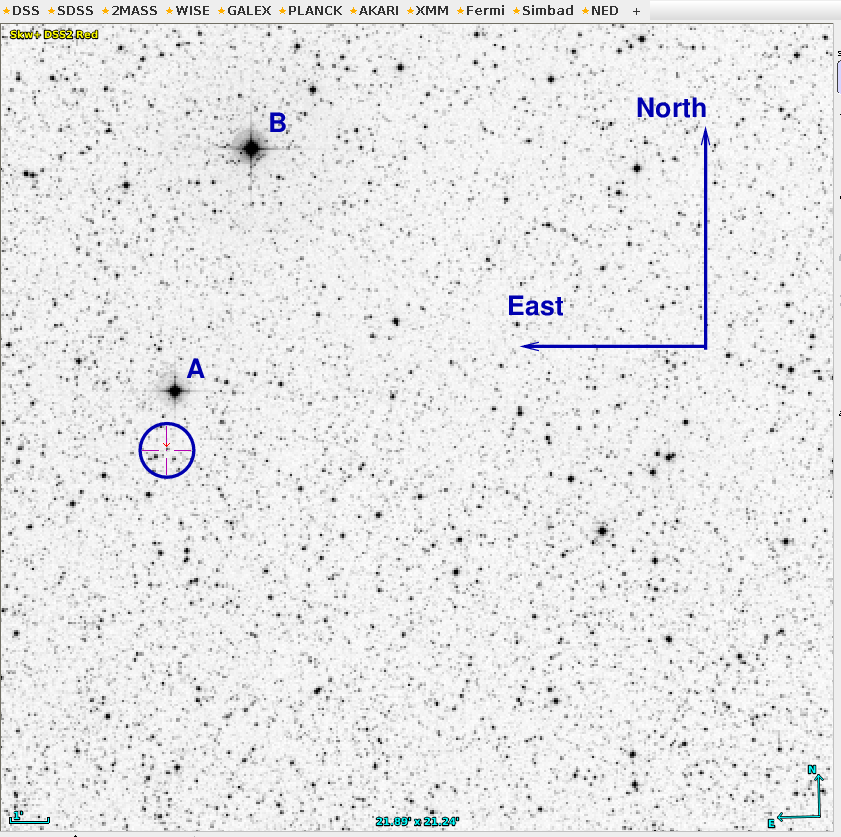
The two labelled stars are
A HD 175959 B HD 175922
Below is a chart taken with the RIT Observatory telescope last night.

The stars "C" and "D" are in the UCAC4; star "C" is slightly saturated in some of the RIT Obs images.
star C = UCAC4 516-088417 B = 14.722 V = 15.544 star D = UCAC4 517-085878 B = 12.750 V = 12.380I used star "D" to convert the instrumental magnitudes to the V-band scale (though of course, they are unfiltered measurements)
Below is a graph showing the sky brightness as a function of time during the observing run. Note the lack of clouds!

Below is a graph showing the FWHM as a function of time during the observing run. I tried refocusing at 3:00 local, about halfway through the V446 Her measurements, but it didn't make much difference.

I used 60-second exposures during this observing run. The target had about 500 peak counts/2 with this exposure time; note that the variable's light is mixed with the light of two nearby constant stars, so any variations are diluted.
Using aperture photometry with a radius of 4 pixels (radius of 5.7 arcsec), I measured the instrumental magnitudes of a number of reference stars and the target. Following the procedures outlined by Kent Honeycutt's article on inhomogeneous ensemble photometry, I used all stars available in each image to define a reference frame, and measured each star against this frame. I used the UCAC4 V-band magnitude of star "D" to convert the ensemble instrumental magnitudes to a reported "V"-band magnitude (but remember, it's a clear filter).
Sigma-vs-mag plot: The target is at 4.24.

Image adjustment factor: note again the lack of clouds.
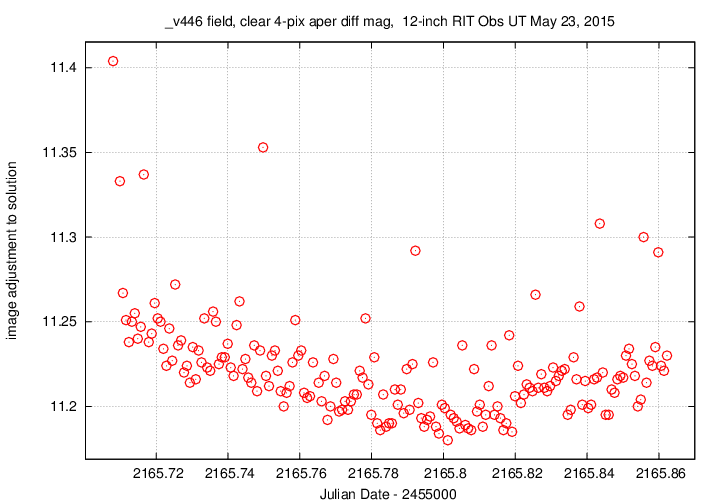
The target, shown in green, shows MAYBE a hint of variation, but at very low significance. Its average magnitude around "V" = 15.6.

Here's a closeup.
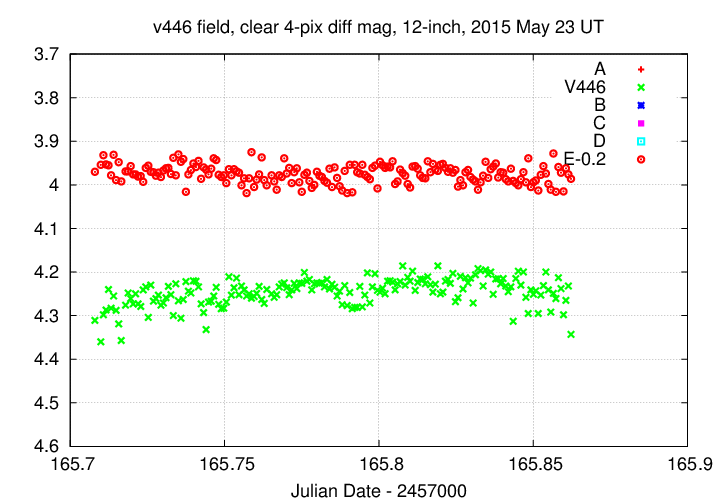
Since I'm not sure there are any variations here, I'm not putting out the photometry.
Last modified 5/23/2015 by MWR.